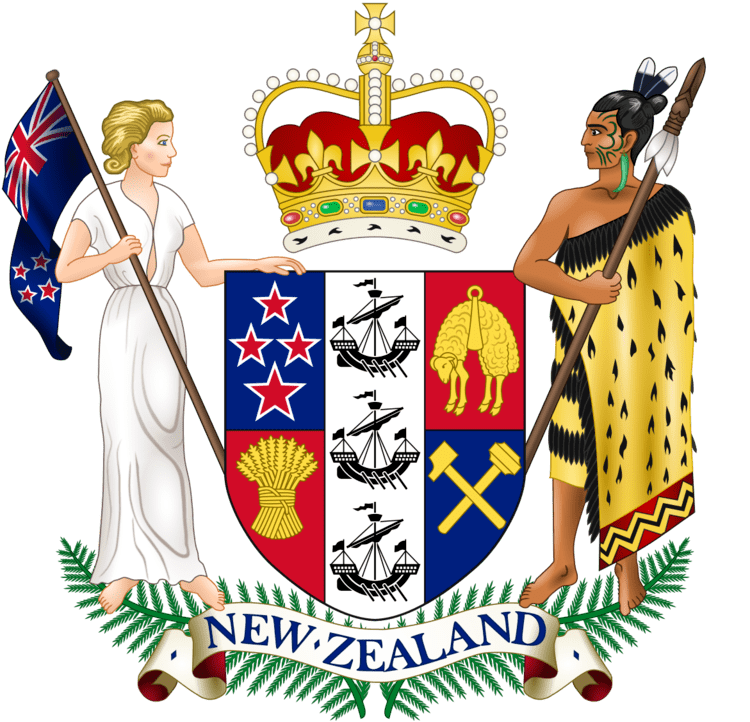Formation 2 July 1889 | ||
 | ||
Style The Honourable(Formal)Leader of the Opposition(Spoken) Term length While leader of the largest political party not in government | ||
The Leader of the Opposition in New Zealand is the politician who, at least in theory, commands the support of the non-government bloc of members in the Parliament of New Zealand. In the debating chamber the Leader of the Opposition sits directly opposite the Prime Minister. The current Leader of the Opposition is Andrew Little, the Leader of the Labour Party.
Contents
Role
By convention, the Leader of the Opposition is the leader of the largest party of the Opposition.
The Leader of the Opposition does not have a large official role, as most of the post's functions are ceremonial. Nevertheless, there are several ways in which the Leader of the Opposition participates directly in affairs of state. Often, these relate to national security matters, which are supposed to transcend party politics – the New Zealand Security Intelligence Service, for example, is required to brief the Leader of the Opposition as well as the Prime Minister on certain matters.
The Leader of the Opposition also receives a higher salary than other members of the Opposition, being paid the same amount as a Cabinet Minister.
History
For much of the country's early history, the role was not a formal one. For most of the 19th century, there was rarely any one person who could be considered Leader of the Opposition – those figures who took leading roles in opposing the government of the day were merely "first among equals", and had no formal office. It was only when the Liberal Party was formed that any unified leadership appeared in Parliament, and the role of Leader of the Opposition is generally traced from this point. John Ballance, leader of the Liberals (and later Premier) is usually considered the first Leader of the Opposition in the modern sense.
When Ballance led the Liberals into government in 1891, they faced no formal opposition in a party sense, though certain MPs were styled Leader of the Opposition. However, their opponents gradually coalesced around a leader, William Massey, who became Opposition leader in 1903, and in 1909 became the first leader of the new Reform Party. After this, the Leader of the Opposition would always be the parliamentary leader of the largest party in the House of Representatives that had not undertaken to support the Government of the day.
One notable exception to this was during World War I, when the opposition Liberal Party accepted the governing Reform Party's offer to form a wartime coalition. Prime Minister Massey also extended the offer to the new Labour Party who rejected it. This made Labour the largest party not in government, however their leader Alfred Hindmarsh was not recognized as the Leader of the Opposition. Joseph Ward, who became Deputy Prime Minister in the wartime cabinet still retained the title, albeit in name only.
During the 1910s and 1920s, the role of Opposition alternated between the Liberal and Reform parties. However, the rise of the Labour Party in the 1920s, together with a gradual weakening in support for the Liberals, led to a three-party situation by the mid-1920s, with the Labour and Liberal parties having a similar number of seats. After the 1925 Election there was no official Leader of the Opposition until Rex Mason of Labour won the seat of Eden in the by-election held on 15 April 1926. Labour became superseded the Liberals as the official opposition and their leader Harry Holland became Leader of the Opposition.
The 1928 General Election put United (the renamed Liberal party) in government for the last time. Reform then became the Opposition, however in 1931 Reform entered into coalition with the Liberals, and Labour then became the Opposition, despite being the third party. The unity of the Coalition, culminating in the formation of the National Party in 1936, created a stable two-party system, with National and Labour alternating between Government and Opposition for much of the remainder of the century.
With the introduction of the MMP voting system, first used in the 1996 general elections, the nature of opposition has changed. Now, though the leader of the largest non-Government party still becomes the Leader of the Opposition, there will usually be several parties who are "in opposition". An example of this arose after the 2002 general elections, when the National Party gained only 27 seats, less than half the 58 seats held by opposition parties. This prompted calls from a number of parties, notably New Zealand First and the Greens, for the abolition or reform of the post. It was argued by these parties that the position had become an "anachronism" in the modern multi-party environment, and that the days of a united opposition bloc were gone. However, with the resurrection of the National Party in the 2005 general election, a more traditional relationship between Government and Opposition has been restored.
List of Leaders of the Opposition
A table of Leaders of the Opposition is below. The table begins in 1891, when the first real political party (the Liberals) was founded. Those who also served as Prime Minister, either before or after being Leader of the Opposition, are indicated.
1 From 4 August 1915 to 21 August 1919, the Reform Party and the Liberal Party formed a joint wartime coalition. Joseph Ward of the Liberals officially remained "Leader of the Opposition", even though he was actually part of the government.
